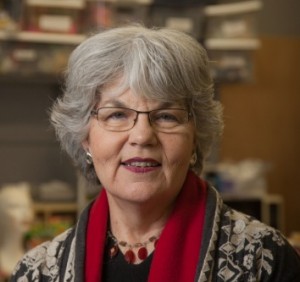Celebrating The Legacy Of Paul Baker, Founder Of Dallas Theater Center
ArtandSeek.net March 29, 2019 46“Irritating, arrogant, nuts …and a genius.” That’s how one actor described Paul Baker. He founded the Dallas Theater Center and collaborated with Frank Lloyd Wright to build its home. When Booker T Washington High became an arts magnet school, Baker was its first director. His daughter, Robyn Flatt, co-founded the Dallas Children’s Theater using his principles. In State of the Arts, Flatt tells me why writers, theater directors and educators are gathering this weekend to reflect on Baker’s legacy.
Why is Paul Baker still relevant today, 10 years after his death?

Robyn Flatt.
What was different about his approach to theater?
Up to that time, you were pretty well accustomed to proscenium theater. You were looking through a window into a world. And he wanted to break that out. And at Yale, he was required to design a theater. And so he did. And the theater he designed – so three stages around the audience, and the audience in swivel chairs, that could turn side to side to see the action.
And the action could even go through the audience, which is what just knocked the socks off the British actor Charles Laughton, when he came in and saw how my dad was using space, and bringing the audience into the action.
I think it might be hard for people today to think about something like a revolving stage, or actors running through the audience, as incredibly innovative. But that was just not done at the time.
Your father created a whole system of exercises that are really designed to get one in touch with one’s creativity and strengths.
He said, “I want you to find who you are. And explore that. And I want to give you the tools to do it.”
That’s how Preston Jones started out, was from this excercise. That’s how Robert Flynn, who’s a wonderful Texas writer, novelist. That’s how Octavio Solis, who’s going to be with us this weekend, that’s how he got started, was this simple, simple, exercise.
When Booker T Washington High School became an arts magnet, Paul Baker was the founding director. And he would use these exercises with the students.










